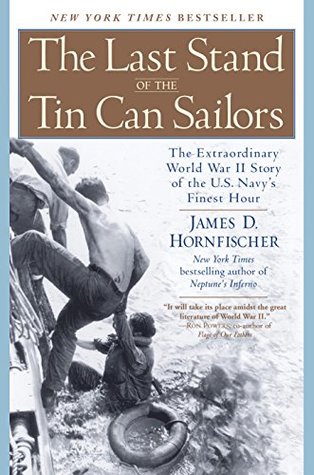More on this book
Community
Kindle Notes & Highlights
Read between
September 25 - October 8, 2023
“A large Japanese fleet has been contacted. They are fifteen miles away and headed in our direction. They are believed to have four battleships, eight cruisers, and a number of destroyers. “This will be a fight against overwhelming odds from which survival cannot be expected. We will do what damage we can.”
Situated closest to the advancing enemy fleet, he could not have missed his ship’s consignment to quick destruction. Faced with it, Evans evidently saw no need to await orders from Commander Thomas aboard the Hoel or from Admiral Sprague. If carrier commanders traditionally saw the destroyers’ primary battle role as laying smoke screens to cover the flattops’ escape, Evans had other ideas about what he was supposed to do. Destroyers sortied. They interposed. They sacrificed themselves for the ships they were assigned to protect. Evans would do his duty for the Fanshaw Bay, the St. Lo, the
...more
That Evans acted on instinct, ahead of actual orders, was elemental to his constitution and his experience.
Smoke making was an act of sacrifice: the smoke flowed behind the ship that made it, shrouding everything in its wake. It gave its maker no protection. If Taffy 3 had a prayer to survive, it would depend on confusing Kurita and shielding the retreating escort carriers from view. “We were making smoke, zig-zagging and heading for the Jap fleet,” seaman John Mostowy would write, “at flank speed and alone.”
One trait of good commanders is that they make simple decisions at the right times and without delay.
But the Japanese did not prove to be the shots that Hagen’s radar-directed gun system was. Hagen’s crews had lighter weaponry but far better aim. The humans were novices to surface combat, but the computer, like the radar and gyro that aided it, knew no fear.
“Anxieties,” wrote Alfred Thayer Mahan, “are the test and penalty of greatness.” On the cusp of a smashing victory, a commander must keep his nerve or fail altogether. According to that great American naval strategist, who had found an attentive readership in Japan: Strenuous, unrelaxing pursuit is therefore as imperative after a battle as courage is during it. Great political results often flow from correct military action; a fact which no military commander is at liberty to ignore. He may very well not know of those results; it is enough to know that they may happen, and nothing can excuse
...more
The Battle off Samar was a battle of firsts: the first time a U.S. aircraft carrier was destroyed by surface gunfire; the first time a ship was sunk by a suicide plane; the first time the mightiest battleship afloat fired on enemy warships. And it was a battle of lasts: the last massed ship-versus-ship action in naval history; the last time a battleship fired its main batteries at an enemy; the last time small destroyers charged an opposing battle line.
“This desperate expedient which left the Task Unit without any screen for the next eight hours was made necessary by the absence of any rescue effort from other sources.”
Legend, tradition, history can drive a commitment to excellence that raises people and has them perform at a level above anything they ever dreamed they could do. And it makes all of us realize the potential that everybody has who serves for you and goes to sea on ships.


